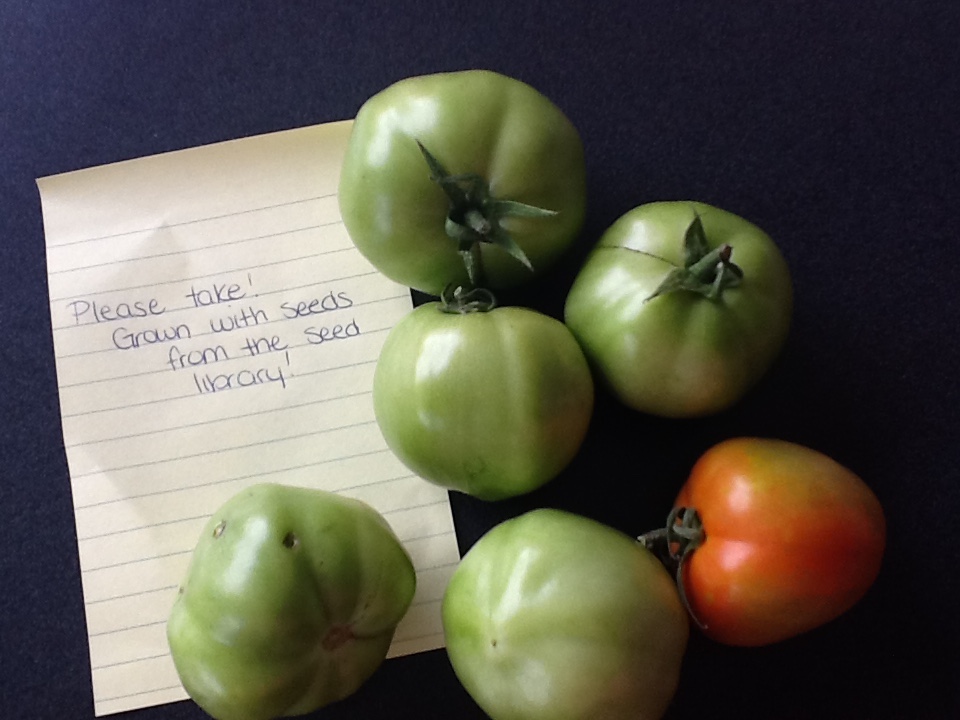BPL Seed Library
With the community's help, in 2023, we have given out around 6000 BPL Seed Packs - all made from donated seed!
Though the Seed Library is now closed for the season, it will once again start up in June 2024.
Seeding 101
Containers
- Sterilize your pots with a mild bleach solution before using them; this kills bacteria and prevents the transfer of diseases.
- Some gardening centres in Barrie create a leave-a-pot-take-a-pot zone where you can find free pots of various sizes.
- Recycle yogurt and pudding cups or other household containers by punching holes in the bottom.
- Make sure to use drip trays. You can use kitchen plates, saucers, serving platters and other containers as drip trays that can catch overflow and facilitate bottom-up watering.
- Choose sizes that work well for you. Tiny pots will work, but it can be a lot of work to re-pot plants into larger containers when they get bigger; you may prefer to start large so that the plant can just keep growing until it’s time to transfer it outside.
Soil
- You can use a soilless, pre-mixed growing medium, if you have ready access to it; however, as long as you keep your pots moist (by covering them with saranwrap at the beginning and watering routinely once seeds have germinated), potting soil works just as well.
- In a pinch you can use soil from outside. This is not the best option: it may be too dense (like clay) or too sandy, it may come with tiny eggs or diseases, or it may be buried under two feet of snow!
Location
- Find a sunny spot in your house; if your seedlings don’t get enough light they’ll become leggy and prone to snapping.
- Most seeds will germinate at temperatures between 18-22°C. If you’re able to get your hands on a grow-light, this is a great option.
Quantity and Timing
- When choosing how many seedlings to start, keep in mind the amount of indoor space you have to work with, the size of your outdoor growing area, and the possibility that some plants might not thrive. In time, you’ll learn what you like to grow and eat best, what gets left in the garden, and what doesn’t do well in your soil.
- Resist the urge to start seeds earlier than you should – this will result in leggy plants prone to breaking when they are moved outside. Refer to seed-specific planting instructions to figure out when you should plant each variety of seed.
Watering
- Damp soil and plants can lead to disease. It’s important to avoid drowning your seedlings.
- Make sure that your pots have good drainage holes, and once they have germinated, it’s a good idea to water from the bottom up by filling the drip trays and allowing the soil/plant to suck the water up into the pot. You can keep stems dry at the base by adding a thin layer or sand or perlite to the surface to absorb excess moisture.
- Let the soil dry out completely between waterings (once seeds have germinated). Don’t crowd your pots with too many plants; thin them if too many come up.
Moving Plants Outside
- On mild days, move your plants outside, gradually leaving them out for longer periods of time.
- After a week or so of this, if nighttime temperatures are above freezing and you’re past the last frost date (in Barrie this is May 11-20), your plants should be ready for a permanent move.
- If a severe drop in the temperature catches you by surprise, cover your plants with a blanket or some straw.
Harvesting and Donating Seeds
We welcome donations throughout the year. When you harvest your plants, please save some seeds to donate back to the library. Before you donate seeds, please label the envelope with the seed type, the date the seed was harvested or purchased, and your contact information.
This year, we are grateful to the following local seed companies for their generous support:
Other Resources
- Check out the Gardening Buzz section of our Program Portal for how-to videos, interviews with experts, activities for kids and families, and more!
- Our Plant-by-Plant Guide will provide more detail on our most popular seeds.
- Innisfil Seed Library has a great resource to take you more in depth on your seeding and planting journey.
- Barrie Community Garden Program - There are currently six community gardens in the City of Barrie and they are supported by our community partners Urban Pantry and the Simcoe Muskoka District Health Unit. The Community Garden Program is governed by the Community Garden Policy. The City administers the registration of the garden plots and any alterations to the garden plan. Residents can rent a plot or participate in a sponsored communal plot. More details can be found on the City website.
- Don't forget! We have a wide variety of gardening books and videos for you to check out: get advice, learn something new, find inspiration!

.jpg?id=1963)
